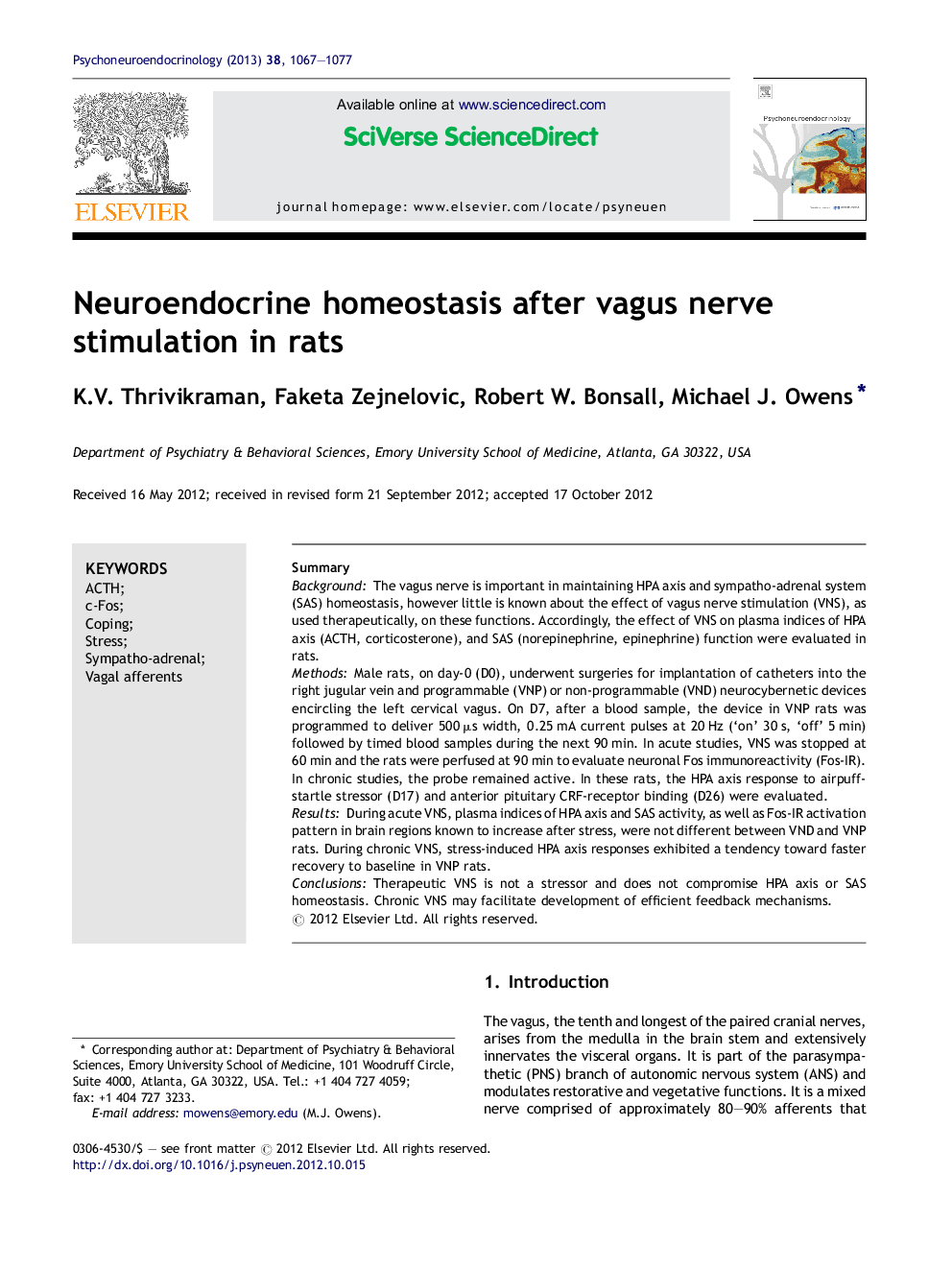| کد مقاله | کد نشریه | سال انتشار | مقاله انگلیسی | نسخه تمام متن |
|---|---|---|---|---|
| 336471 | 547139 | 2013 | 11 صفحه PDF | دانلود رایگان |

SummaryBackgroundThe vagus nerve is important in maintaining HPA axis and sympatho-adrenal system (SAS) homeostasis, however little is known about the effect of vagus nerve stimulation (VNS), as used therapeutically, on these functions. Accordingly, the effect of VNS on plasma indices of HPA axis (ACTH, corticosterone), and SAS (norepinephrine, epinephrine) function were evaluated in rats.MethodsMale rats, on day-0 (D0), underwent surgeries for implantation of catheters into the right jugular vein and programmable (VNP) or non-programmable (VND) neurocybernetic devices encircling the left cervical vagus. On D7, after a blood sample, the device in VNP rats was programmed to deliver 500 μs width, 0.25 mA current pulses at 20 Hz (‘on’ 30 s, ‘off’ 5 min) followed by timed blood samples during the next 90 min. In acute studies, VNS was stopped at 60 min and the rats were perfused at 90 min to evaluate neuronal Fos immunoreactivity (Fos-IR). In chronic studies, the probe remained active. In these rats, the HPA axis response to airpuff-startle stressor (D17) and anterior pituitary CRF-receptor binding (D26) were evaluated.ResultsDuring acute VNS, plasma indices of HPA axis and SAS activity, as well as Fos-IR activation pattern in brain regions known to increase after stress, were not different between VND and VNP rats. During chronic VNS, stress-induced HPA axis responses exhibited a tendency toward faster recovery to baseline in VNP rats.ConclusionsTherapeutic VNS is not a stressor and does not compromise HPA axis or SAS homeostasis. Chronic VNS may facilitate development of efficient feedback mechanisms.
Journal: Psychoneuroendocrinology - Volume 38, Issue 7, July 2013, Pages 1067–1077